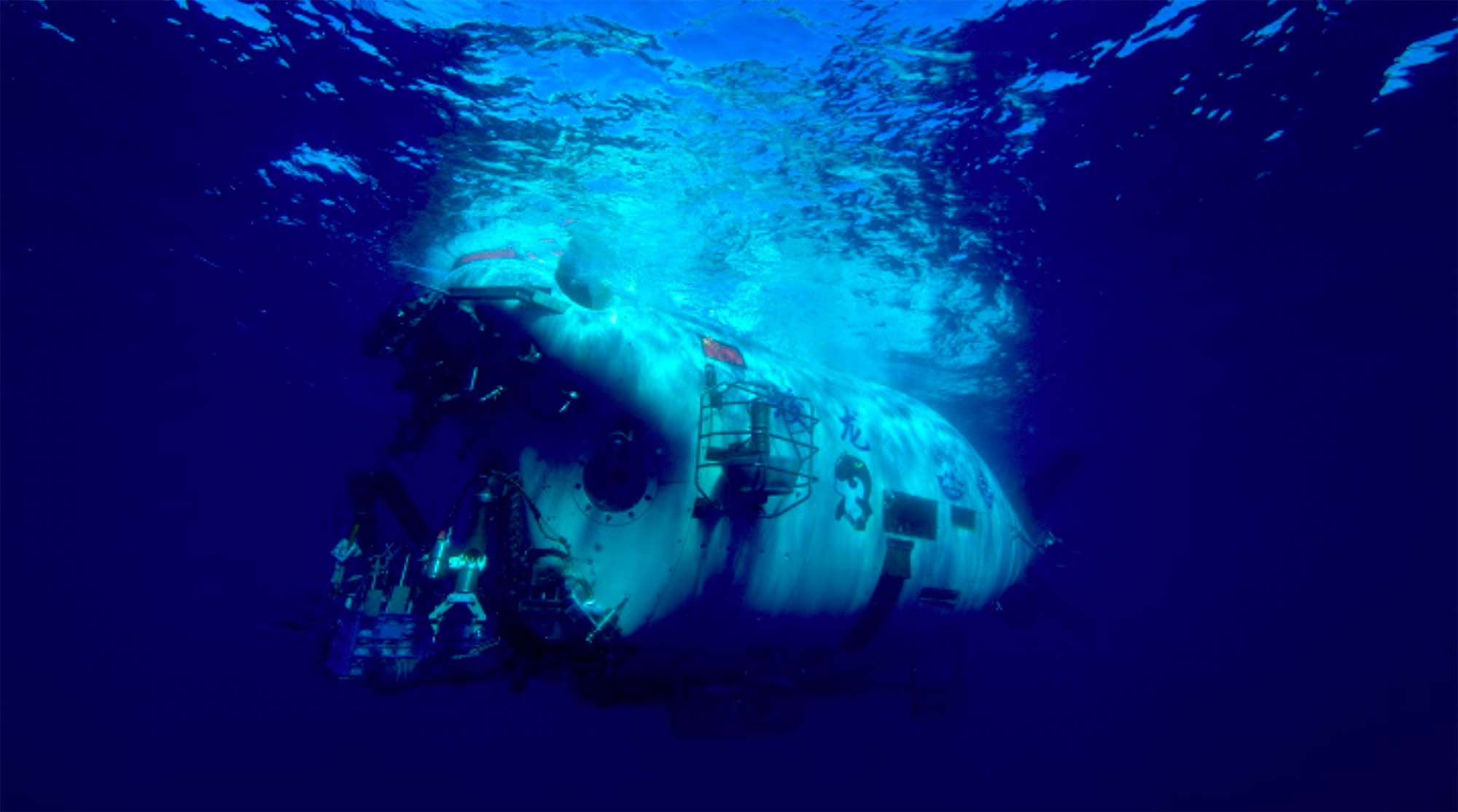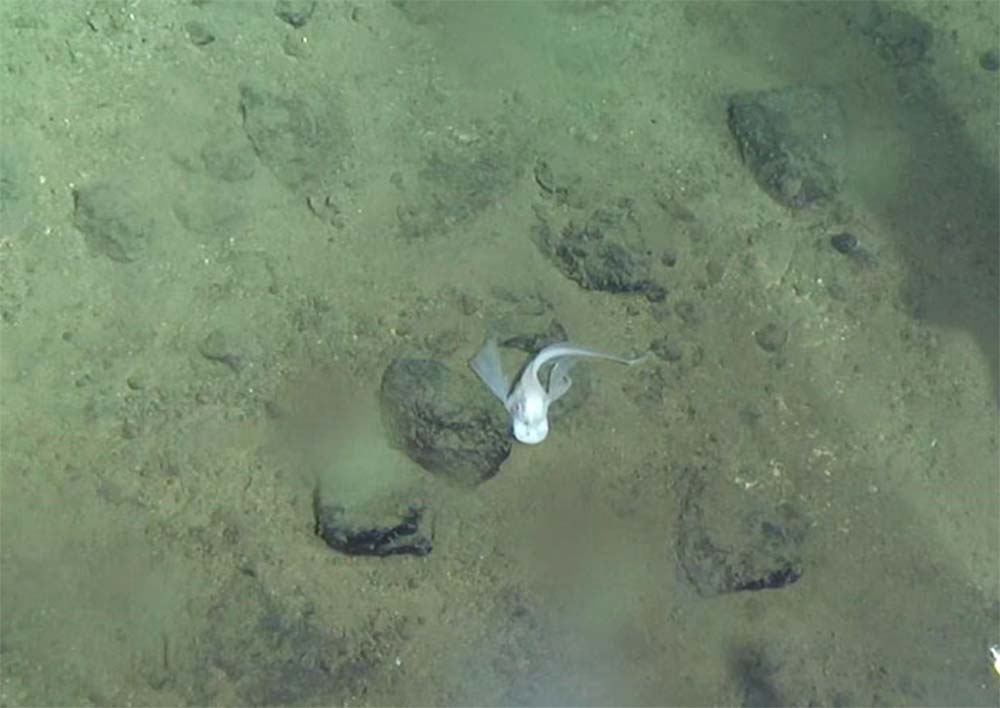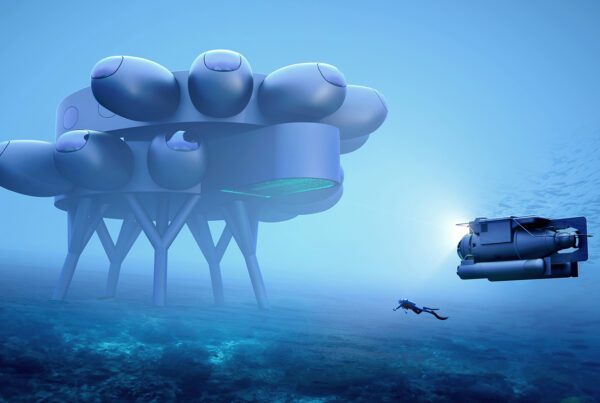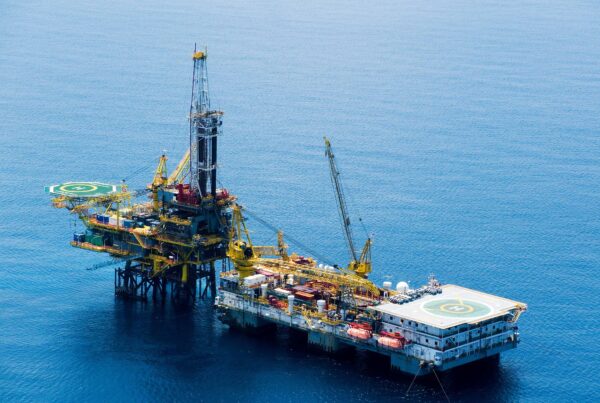Conceptualizing the "Fourth Pole" via China's "Jiaolong" Submarine
In his full-length reportage, writer Xu Chen (2016) describes the Chinese submarine Jiaolong’s (Figure 1) exploration of the deep sea as the “Fourth Pole.” In spite of the author’s initial usage as a literary description of the Mariana Trench, the “Fourth Pole” ultimately appears as a cultural semiotic of depth.
In reviewing Xu’s book, writer Li Bing-Yin noted:
Subtly related to the already familiar “three poles” of the Earth, the North and South Poles and the Himalayas, [the Fourth Pole] is an innovative expression of the concept of the oceans, especially the deep seas… It will certainly become a hot topic of interest for the whole world in the years to come. [My translation] (2016, p.3)
Through Xu’s work and Li’s commentary, we can see a fascination with depth emerging in contemporary China’s feeling towards the oceans. This feeling is confirmed in Li’s subsequent writing as relating the descent to Chinese national pride and patriotism. As Li describes,
Thanks to the Jiaolong submarine, China occupies a very important position in [international deep-sea] affairs and has considerable capabilities, which makes our countrymen feel very satisfied and proud… The development of such a modern high-tech machine has always been accompanied by the awakening of the country’s national maritime consciousness and the change of traditional maritime concepts. [My translation] (2016, p.3)
According to China’s Xinhua news agency (2022), the submarine Jiaolong has completed 20 dives in the Mariana Trench since its initial sea trials in 2012. Xu Chen’s reportage details the depths of these dives – from 1109m to a world record-breaking 7062m (Figure 2). The pursuits and obsessions I displayed above clearly exemplify China’s commitment to demonstrating its scientific and technological hard power, which is often invoked as a source of pride. There are, however, some reports that reveal another dimension of deep diving, namely, the extraction of resources from the deep aqua.
In a report by China Economic Weekly, journalist Zhang Lujing writes that,
The Jiaolong has become the forerunner of China’s deep-sea and oceanic exploration. It has led China to build more advanced equipment to explore the deep and the offshore, searching for water, deep-sea creatures, minerals and other precious and even unknown resources. [My translation] (2013, December 23rd)
In this account, Zhang (2013, December 23rd) also turns her attention to deep-sea combustible ice. According to Zhang, the Jiaolong has carried out 73 dives in the South China Sea, the East Pacific and the Northwest Pacific, where it has conducted numerous scientific research operations. One of the key tasks was to focus on the “cold springs” (the subsea outlets for combustible ice). With this as a starting point, more and more “Jiaolong” (which stands for Chinese submarine) are expected to explore further and deeper into the oceans, thus drawing a “treasure map” of the deep sea.
The Jiaolong has cemented China’s technological triumph in and obsession with depth in presenting deep-sea wonders and setting new dive records. Nevertheless, a growing body of evidence is emerging to suggest that the intent behind these deep dives is extractivism: that is, to mine deeper to exploit more resources.

Figure. 1 Chinese submarine Jiaolong. Xu chen, (2016). Di Si Ji (The Fourth Pole, 第四极), Qingdao: Qingdao Author Press, 2016.

Figure. 2 Image captured by the Jiaolong – Deep-sea Lionfish. Image Source: http://www.news.cn/nzzt/10/
References
Xinhua Significant News Department, (2022). “20 Deep Dives of the Jiaolong at the ‘Everest of the Ocean'” (蛟龙号20次深潜”海洋中的珠穆朗玛”). Retrieved November 23, 2022, from http://www.news.cn/nzzt/10/
Xu chen, (2016). Di Si Ji (The Fourth Pole, 第四极), Qingdao: Qingdao Author Press, 2016.
Zhang, L. (2013, December 23). “Capital Logic behind the Jiaolong: Extracting Combustible Ice – Private Capital Enters” (蛟龙号背后资本逻辑:开发可燃冰 民间资本进入). Sohu News. Retrieved November 23, 2022, from http://news.sohu.com/20131223/n392269022.shtml


